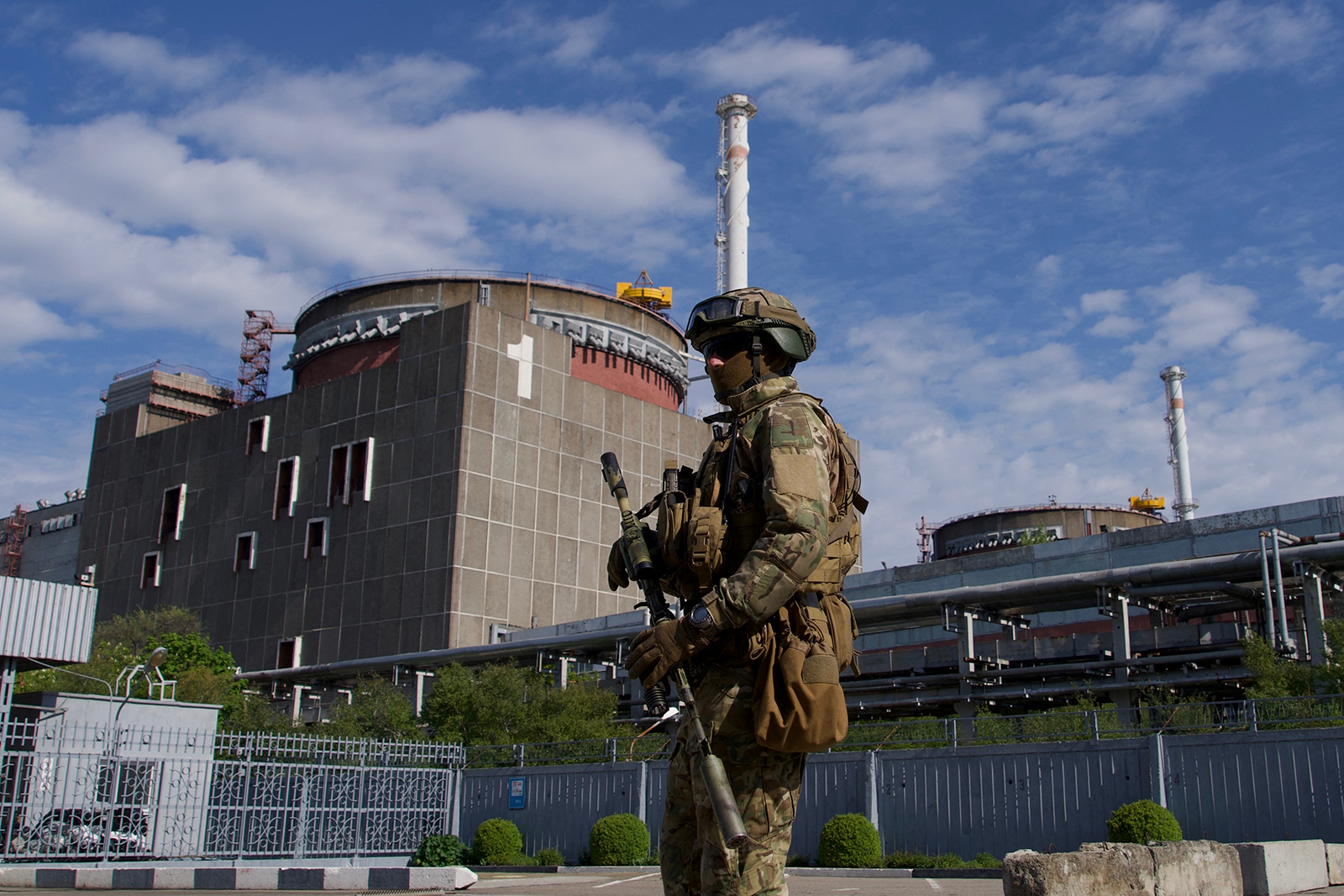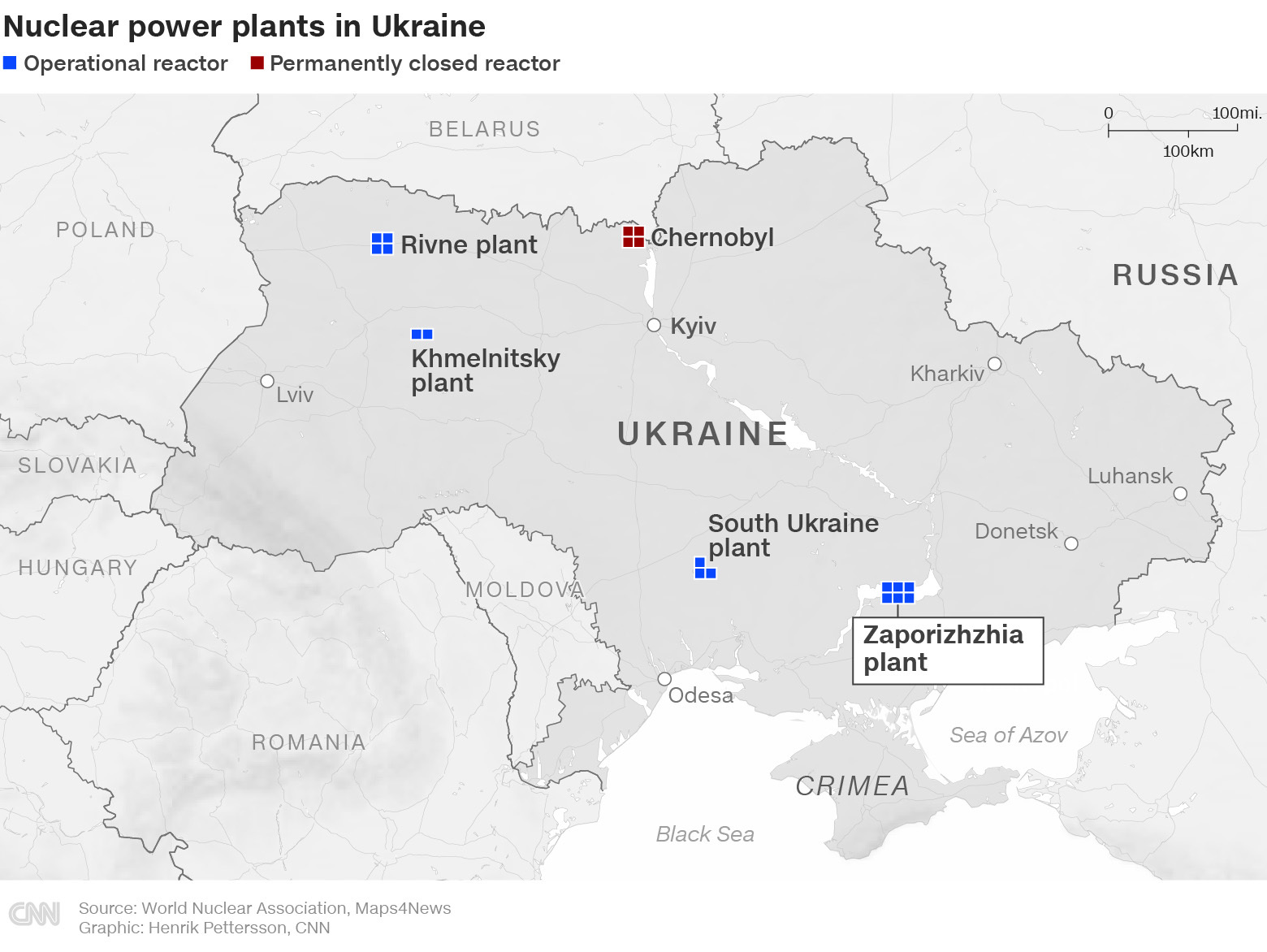[ad_1]

Today, the International Atomic Energy Agency said that one of the main power lines in the Zaporizhzhia nuclear power plant was repaired and is once again supplying the plant with electricity from the Ukrainian grid.
Ukraine relies heavily on nuclear power – about half of its electricity comes from 15 nuclear reactors at four plants across the country, according to the World Nuclear Association.
The Russian-controlled plant, with six reactors, is the largest nuclear power station in Europe. It was mostly built in the Soviet era and became Ukrainian property after its declaration of independence from the Soviet Union in 1991.

The Zaporizhzhia plant is located on the eastern bank of the Dnipro river in Ukraine. The area, and the nuclear complex, has been under Russian control since the beginning of the war, but the plant is still mostly operated by Ukrainian workers.
Each of Zaporizhzhia’s reactors would cost $7 billion to replace, making the plant a target for Russians to capture undamaged, with hopes of serving its own electricity market, according to analysis by defense and security intelligence firm Janes. Should Russia keep it, Ukraine would lose 20% of its domestic electricity generating capacity.
What does its position on the front line mean?
Shelling in the surrounding towns as well as near the power plant has been common, according to local reports.
Both Ukraine and Russia have accused each other of shelling the site. CNN cannot independently verify either government’s claims.
The international community has been on high alert about nuclear safety, yet experts believe a Chernobyl-style disaster is unlikely. Yet risks remain, one of which is potential damage to nuclear waste stored openly on site – in ponds of water and in casks, according to Petro Kotin, president of Energoatom, which runs nuclear power plants in Ukraine.
IAEA visit
On Sept. 1, a team from the IAEA visited the plant for the first time since Russia’s invasion on Feb. 24. The team saw damage to the roofs of various buildings, to the special building that houses fresh nuclear fuel and solid radioactive waste storage facility. They also witnessed shelling during the visit and called on both sides to cease hostilities in the area.
IAEA head Rafael Grossi has since called for a nuclear safety zone around the plant and surrounding area. Two IAEA members remain at the site.
Source link

